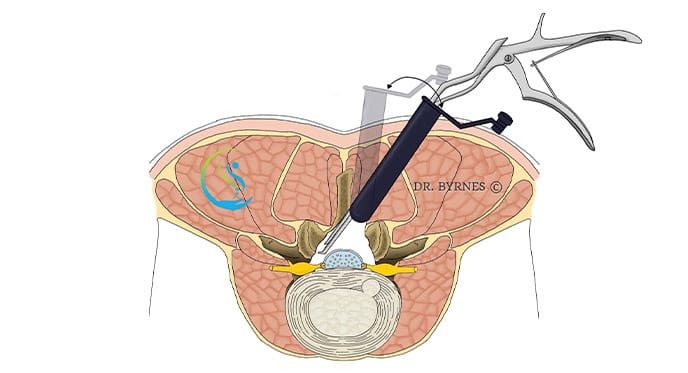
Minimally invasive spine surgery (MISS) has transformed the field of spine surgery, developing less traumatic surgical options, faster recovery, and improved outcomes compared to traditional open surgery.
This article describes the principles of MISS, its history, current practice, and cutting-edge developments, including endoscopic spine surgery, cervical disc replacement, and robotic spine surgery.

MISS aims to achieve the same goals as traditional open surgery—relieving pain, restoring function, and stabilising the spine—but with smaller incisions, less tissue disruption, and reduced blood loss.
Key principles of MISS include:
MISS has evolved over the past few decades. Early developments included percutaneous discectomy and nucleoplasty, which laid the foundation for more advanced techniques.
The introduction of endoscopic and microendoscopic approaches and improved imaging guidance facilitated the development of MISS procedures for various spinal conditions, such as herniated discs, spinal stenosis, and spinal instability.
Today, numerous MISS techniques address a wide range of spinal pathologies:
Endoscopic spine surgery is an advanced MISS technique that uses an endoscope—a small tube with a camera and light source—to visualise the surgical area.
This approach allows for even smaller incisions and further reduces tissue damage.
Endoscopic spine surgery has been successfully applied to discectomy, decompression, and fusion procedures, significantly improving patient outcomes.
Cervical disc replacement is a motion-preserving MISS procedure designed to treat cervical degenerative disc disease. The damaged disc is removed, and an artificial disc is implanted between the vertebrae, restoring disc height and preserving spinal motion.
This approach reduces the risk of adjacent segment degeneration, a common issue with traditional fusion procedures. Cervical disc replacement has been shown to provide excellent pain relief and functional improvement.
MISS offers numerous benefits over traditional open surgery, including:
However, MISS has limitations and may not be suitable for all patients or spinal conditions. Complex spinal deformities, severe instability, or previous spinal surgery may require traditional open surgery.
MISS continues to evolve, with ongoing innovations in surgical techniques, instrumentation, and imaging. Key future directions include:
Minimally invasive spine surgery has come a long way since its inception, with endoscopic spine surgery, cervical disc replacement, and robotic-assisted surgery representing the cutting edge of spinal care.
These advancements have greatly improved patient outcomes, reduced complications, and expanded the range of treatable spinal conditions.
As MISS continues to evolve, we can expect even better results and further innovations, setting new standards in spine surgery and patient care.